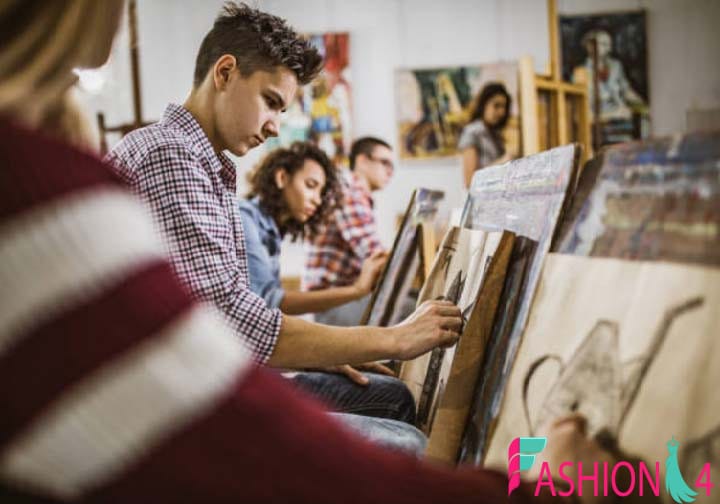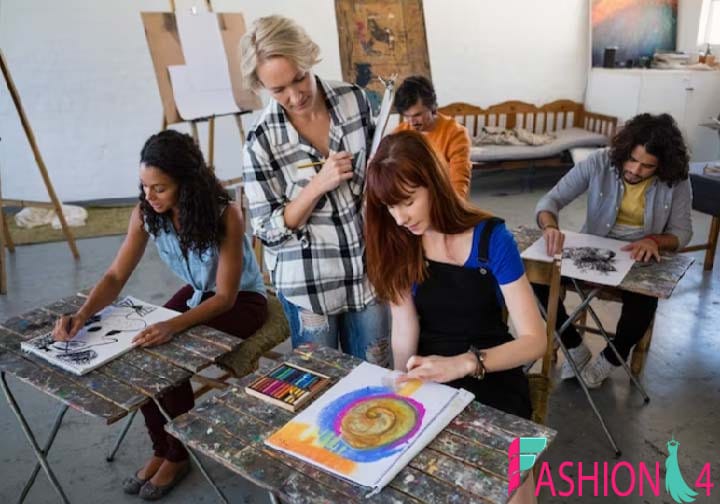
Art has been a cornerstone of human expression for centuries, offering insights, emotions, and perspectives that words alone often cannot convey. But have you ever wondered what deeper lessons art can teach us? Beyond aesthetics, art is a mirror of life, reflecting resilience, creativity, and human connection.
In this article, we’ll explore profound lessons from the art that can inspire and guide us in our personal and professional lives. Whether you’re an art enthusiast or a casual observer, there’s something here for everyone.
What Art Teaches About Perspective
Art challenges us to see the world differently. A painting might depict a rainy day, but depending on the artist’s technique, it could evoke feelings of melancholy or tranquility. Perspective in art reminds us that life, too, is about interpretation.
Have you ever looked at a situation and wondered if someone else might see it differently? Art trains us to consider multiple angles, helping us approach problems and relationships with empathy and an open mind.
The Power of Creativity
Creativity is the heart of art, and it’s a skill that transcends the canvas. In life, creativity fuels innovation, problem-solving, and adaptability.
Consider a chef experimenting with new recipes or an engineer designing solutions for real-world challenges. Art teaches us to think outside the box and embrace unconventional ideas, empowering us to navigate life’s complexities with ingenuity.
Patience and Persistence
Every masterpiece begins as a blank canvas. Art demands patience—layer by layer, an artist refines their work, often redoing sections to achieve perfection.
This mirrors life’s journey. Whether learning a new skill or pursuing a goal, success comes with persistence and resilience. Through art, we learn the value of delayed gratification and the beauty of steady progress.
Overcoming Fear of Failure
Artists rarely create flawless work on their first attempt. Sketches are redone, and colors are reimagined. Yet, each mistake contributes to the final piece.
This teaches us a critical lesson: failure isn’t the end; it’s part of the process. Just like an artist improves with each stroke, we grow stronger through our setbacks.
Art as a Tool for Self-Expression
Have you ever felt something so deeply that words couldn’t do it justice? That’s where art steps in. From Van Gogh’s swirling skies to Frida Kahlo’s vivid self-portraits, art provides a safe space for expressing emotions and experiences.
Through art, we’re reminded to embrace vulnerability and share our stories. In doing so, we connect with others who resonate with our journey.
Collaboration in Artistic Pursuits
Art isn’t always a solitary endeavor. Think of theater productions or mural projects—they require teamwork.
Collaborative art teaches us about synergy, compromise, and valuing diverse perspectives. Whether in art or life, working with others enriches the outcome, fostering a sense of community and shared purpose.
The Importance of Observing Details
Have you ever noticed the intricate brushstrokes in a painting or the subtle symbolism in a sculpture? Art invites us to slow down and pay attention.
This practice of mindfulness enhances our ability to observe and appreciate the world around us. In life, details often hold the key to deeper understanding and connection.
Finding Beauty in Imperfection
Japanese pottery often incorporates the concept of kintsugi, where cracks are repaired with gold, emphasizing flaws as part of the object’s history.
Art reminds us that imperfections can be beautiful. This perspective encourages self-acceptance and helps us see value in life’s unpredictability.
Art as a Reflection of Society
From Renaissance masterpieces to modern street art, artists have always commented on social issues.
Art serves as a mirror, reflecting cultural values, struggles, and aspirations. Understanding these reflections broadens our perspective, helping us appreciate the complexity of human experiences.
The Therapeutic Value of Art
Art therapy is widely used to help individuals cope with stress, trauma, and mental health challenges.
Creating or engaging with art promotes emotional healing, offering a sense of release and comfort. Whether you doodle, paint, or visit galleries, art has the power to soothe and inspire.
Connecting Through Universal Themes
Art transcends language barriers, connecting people through shared emotions and stories. A love story in a novel or a dance performance about grief can resonate universally.
These connections remind us of our shared humanity, fostering empathy and understanding.
How Art Encourages Critical Thinking
Analyzing art involves asking questions: Why did the artist choose this color? What’s the story behind this scene?
This critical engagement sharpens our analytical skills, helping us approach life’s challenges with curiosity and logic.
Art’s Role in Building Resilience
Artists often face rejection or criticism, yet they persevere. This resilience inspires us to embrace challenges and keep moving forward.
Whether navigating career setbacks or personal struggles, art teaches us to channel adversity into growth.
Learning to Appreciate Simplicity
Minimalist art demonstrates how less can be more. A single brushstroke or a few lines can convey profound meaning.
In a fast-paced world, art reminds us to slow down and find joy in simplicity.
Carrying Artistic Lessons Into Life
Art’s lessons extend beyond galleries and museums. Whether it’s resilience, creativity, or mindfulness, these principles enrich our everyday lives.
As we embrace these lessons, we unlock new ways to approach challenges, celebrate achievements, and connect with others.
Conclusion
Art is more than a visual or auditory experience; it’s a profound teacher. From fostering creativity to building resilience, lessons from the art inspire us to live more meaningful and connected lives.
So next time you encounter a painting, song, or sculpture, pause and reflect. What lesson might it hold for you?
FAQs
1. What are the key lessons we can learn from art?
Art teaches perspective, creativity, resilience, patience, and self-expression. It also encourages critical thinking and fosters empathy.
2. How can art help in personal growth?
Engaging with art improves emotional intelligence, critical thinking, and self-awareness, enhancing personal and professional development.
3. Why is observing art important?
Observing art helps us slow down, notice details, and appreciate different perspectives, promoting mindfulness and understanding.
4. Can art help with mental health challenges?
Yes, creating or engaging with art can reduce stress, promote emotional healing, and provide a healthy outlet for self-expression.
5. How does art reflect society?
Art captures cultural values, societal issues, and historical moments, offering insights into the human experience across time and space.


